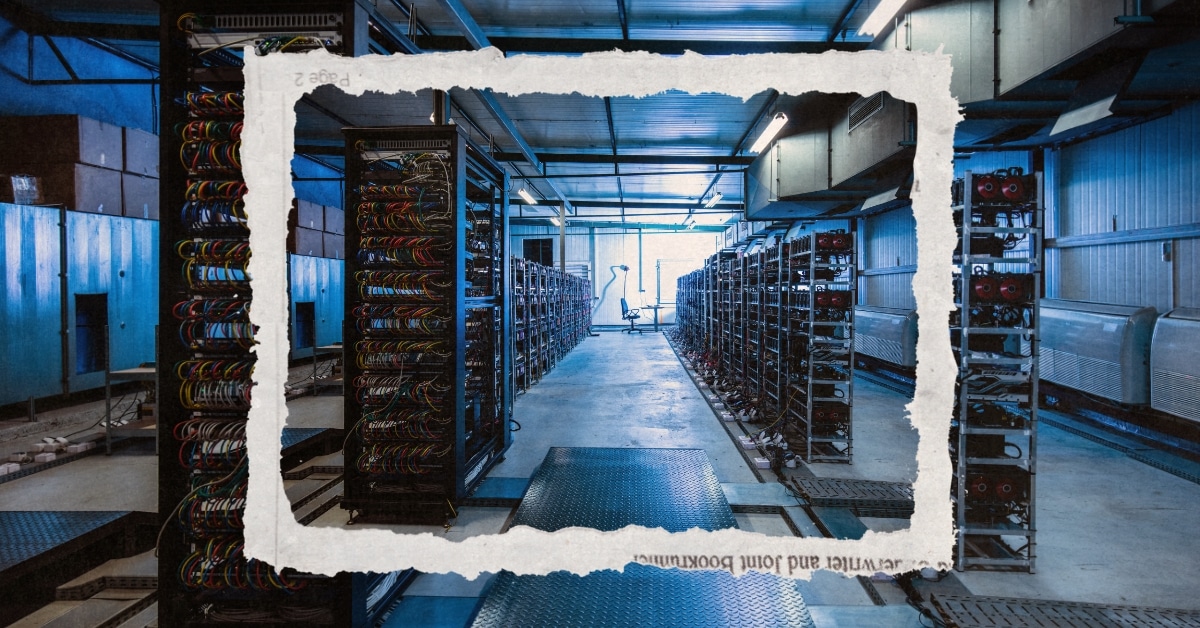News
Why crypto crime in Asia is becoming increasingly problematic

The cryptocurrency industry is inundated with scams and crime. How Asia should tackle crime remains… [+] to be seen. (Photo by Olivier DOULIERY/AFP) (Photo by OLIVIER DOULIERY/AFP via Getty Images)
AFP via Getty Images
Across Asia Pacific, criminals are using cryptocurrency to fund increasingly nefarious schemes. While early crimes involving digital assets tended to target cryptocurrency exchanges themselves, the most infamous was the theft of 880,000 Bitcoin in Japan Mount Gox between 2011 and 2014 it is now worth $45 billion – today digital assets are linked to money laundering, large-scale scams and the financing of illegal weapons programs.
Cryptocurrency advocates usually insist that proper regulation can go a long way towards mitigating this problem. While regulation can increase investor protection and establish rules of the road, we believe the inherent nature of decentralized virtual currencies means the potential for abuse will remain high.
Regulators in some of the region’s major jurisdictions have reached similar conclusions and are acting accordingly.
China tackles digital asset crime
There are many reasons why the Chinese government is wary of cryptocurrency, but chief among them is its association with illegal activity facilitated by its decentralized and anonymous nature. Such criminal activity can quickly become an international problem. For example, in October 2023, the United States Department of Justice (DOJ) charged several Chinese companies and their employees with the production and trafficking of fentanyl. The criminal network relied on cryptocurrency for payments and 16 crypto wallets used in the scheme were identified. “These companies tend to use cryptocurrency transactions to conceal their identity and the location and movement of their funds,” the Justice Department said in a declaration.
Analyzing the on-chain activity of crypto addresses associated with alleged China-based precursor chemical stores, blockchain research firm Chainalysis found that addresses in China received more than $37.8 million in cryptocurrency between January 2018 and April 2023. “The conclusions of our analysis all point in the same direction: sales of fentanyl via cryptocurrency are occurring on a large scale,” Catenaanalysis said in the report.
Domestically, China faces serious cryptocurrency-related fraud. In late 2022, Chinese police arrested 63 suspects linked to a criminal group that used digital assets to launder an estimated amount $1.7 billion in an operation that spans 17 provinces. Chinese authorities have also charged key industry executives.
Cryptocurrencies in Myanmar
Digital assets have become a double-edged sword in Myanmar, where the exiled political opposition (the unity government) has promoted them in an attempt to challenge the country’s ruling junta. The NUG even called for Myanmar to adopt a cryptocurrency backed by the US dollar. In July 2023, the NUG announced the beta launch of a neobank running on Polygon which would trade currency via Uniswap v3 pools and USDT stablecoins.
However, the severity of scams involving digital assets could undermine Myanmar citizens’ confidence in their usefulness. In February it was revealed that only one Myanmar-based company had made a mistake more than 100 million dollars by victims in less than two years – according to Chainalysis and the US anti-slavery group International Justice Mission. Chainalysis said it has tracked digital coins issued by Tether used for infamous “pig slaughter” scams in which perpetrators engage in fake romantic relationships to gain the trust of their victims. Tether tokens have also been used by families of trafficked workers forced to pay a ransom for their release. They made the payments to an eastern Myanmar company based in a complex known as KK Park.
In January, the United Nations Office on Drugs and Crime warned in a report that Tether has become a major payment method for money launderers and scammers operating in Southeast Asia. We believe Tether is attractive to criminals because transactions involving it are fast and irreversible. Once the money is moved, the story is over.
Crypto weapons financing programs
There is one country where cryptocurrency crime is more prevalent than anywhere else, at least given the size of the country, and that is North Korea (DPRK), the reclusive and isolated nation often referred to as the “hermit kingdom.” Data from Chainalysis shows that North Korea’s crypto hacking fits almost perfectly with the industry’s takeoff that began in the late 2010s. North Korean hackers stole just $1.5 million in cryptocurrencies in 2016, but $29 million dollars in 2017 and $522 million in 2018. When the bear market hit in 2019, cryptocurrency thefts in Pyongyang declined slightly, but began to recover in 2021 and increase to $1.65 billion in 2022.
Blockchain intelligence company research TRM laboratories shows that North Korea stole $600 million in cryptocurrencies in 2023. Cyberattacks perpetrated by the DPRK have typically been ten times more damaging than those not linked to the DPRK. Worryingly, North Korea’s increase in digital asset theft appears to be tied to the acceleration of the country’s ever-worrying missile programs. Pyongyang launched more missiles in 2022 than any other year, including 23 in a single day.
During a U.S. Senate hearing in March, Senator Elizabeth Warren estimated that the amount of cryptocurrencies stolen from North Korea could be used to finance the construction of 56 intercontinental ballistic missiles each year. “And the threat is not diminishing,” she said, noting that in March, in a period of just two days, North Korea laundered more than $23 million in stolen cryptocurrencies.
Central banks assert control
We have observed that some regulators’ response to the problems posed by cryptocurrency is to reassert control over monetary policy by issuing central bank digital currencies (CBDCs). While most Southeast Asian countries remain somewhat crypto-friendly, both China and India have effectively banned their use in payments and have made investing in these cryptocurrencies more trouble than they are worth, while aggressively promoting their respective digital fiat currencies. These are the two most populous countries in Asia, with massive economies. If they reject cryptocurrencies, their long-term prospects in the region will be limited, no matter what Southeast Asia does.
On the other hand, we believe that diverse jurisdictions in Asia have the potential to increase cooperation between law enforcement, industry and regulators. Such cooperation could perhaps reduce some of the crypto crime that is now rampant.
But as long as the industry champions anonymity and decentralization, the digital asset ecosystem will remain highly susceptible to abuse. This is a risky proposition for an industry that is still trying to win over regulators and convince them of its usefulness and safety.
News
US Cryptocurrency Rules Delayed by ‘Never-Ending’ Lawsuits

Ripple CEO says cryptocurrency industry still seeking regulatory clarity from US
Speaking to Bloomberg News on Wednesday (July 17), Author: Brad Garlinghouse he said America is behind behind other countries which have already adopted cryptocurrency regulations.
“What we’re seeing, where it’s the UK, Japan, Singapore… even the European Union, more than two dozen countries have come together to provide a framework for cryptocurrency regulation,” Garlinghouse said.
“It’s frustrating that we as a country can’t get that regulatory framework in place. And instead, we have this never-ending lawsuit coming from the SEC that doesn’t really address the problem.”
Ripple has been the target of some of these legal disputes. Securities and Exchange Commission (SEC) sued the company in 2020, accusing it of conducting a $1.3 billion operation offering of unregistered securities tied to its XRP token.
However, last year a judge ruled that only Ripple’s institutional sales of XRP, not retail sales, violated the law, a decision widely seen as a victory for the cryptocurrency industry.
As PYMNTS noted at the time, that ruling has “far-reaching repercussions impact across the digital asset ecosystem, which has long maintained that its tokens do not represent securities contracts.”
However, Garlinghouse told Bloomberg on Wednesday that the company cannot wage multimillion-dollar legal battles over each token.
He spoke to the news agency from the Republican National Convention in Milwaukee, where the party is backing the candidacies of former President Donald Trump and Ohio Sen. J.D. Vance, both of whom are considered pro-cryptocurrency.
But Garlinghouse argued that cryptocurrencies “should not be a partisan issue,” and noted that he had recently attended a conference in Washington that included Democrats, including White House officials.
“I think they were there, listening to the industry… it was refreshing to start having that conversation,” she said.
President Joe Biden earlier this year he vetoed a measure which would have ended the SEC’s special rules for crypto-asset custodians. This legislation was supported by both the digital asset industry and the banking industry.
Ripple early this year donated $25 million to the cryptocurrency industry’s super PAC Fair Smoothiewith Garlinghouse stating at the time that such donations would continue every year, as long as the industry had its detractors.
Second Open SecretsWhich monitor spending For campaigns, the PAC has spent $13.4 million this year, much of it to help defeat Rep. Katie Porter’s (D-Calif.) U.S. Senate campaign.
News
The Future of Cybersecurity in the Cryptocurrency Industry

The cryptocurrency space has had a tumultuous journey, with its fair share of ups and downs. As we look to the future, one area that remains a constant focus is cybersecurity. The digital nature of cryptocurrencies makes them inherently vulnerable to cyber threats, and as the industry evolves, so does the landscape of potential risks.
In 2022, the cryptocurrency market faced significant challenges, with over $2 trillion in market value lost. This event served as a wake-up call for the industry, highlighting the need for robust cybersecurity measures. The future of cryptocurrency security is expected to see a shift towards more regulated and established institutions taking the reins of crypto technology and blockchain infrastructure.
The decentralized nature of cryptocurrencies offers numerous benefits, such as transparency and financial inclusion. However, it also introduces unique security challenges. The risk landscape is filled with threats such as hacking, phishing, ransomware attacks, malware, and social engineering. These threats not only lead to financial losses, but also damage the reputation and trust within the cryptocurrency ecosystem.
Mini-MBA Tekedia edition 15 ((September 9 – December 7, 2024) started recordings; Register today for discounts reserved for early bird customers.
Tekedia AI in Business Masterclass Opens registrations Here.
Join the Tekedia Capital Syndicate and IInvest in Africa’s best startups Here.
The decentralized nature of cryptocurrencies offers many benefits, but it also presents unique security challenges. Cyber risks such as hacking, phishing, and ransomware pose threats to the integrity of digital assets. The infrastructure that supports cryptocurrencies is not immune to vulnerabilities, including smart contract flaws and exchange hacks.
To address these vulnerabilities, the infrastructure that supports cryptocurrencies must be strengthened. Smart contract vulnerabilities, exchange hacks, wallet breaches, and flaws in the underlying blockchain technology are significant concerns that must be addressed to ensure the security and integrity of digital assets.
As cybercriminal tactics and techniques become more sophisticated, the cryptocurrency industry must stay ahead of the curve. The future will likely see more targeted attacks, exploiting weaknesses in infrastructure, networks, and human factors. This requires a proactive and multifaceted approach to cybersecurity.
To mitigate these risks, several measures must be adopted:
Strengthening security measures: Developers, exchanges, and wallet providers must improve security protocols, use strong encryption, implement multi-factor authentication, and conduct regular security audits.
Education and awareness: Users should be educated on best practices for protecting their digital assets, including using strong passwords, recognizing phishing attempts, and using hardware wallets for secure storage.
Looking ahead, the cryptocurrency industry is expected to see an increased focus on robust security measures. Blockchain projects and exchanges are likely to invest in advanced encryption techniques and decentralized storage solutions to protect user assets. The future impact of cyber risk on cryptocurrencies will depend on the collective efforts of stakeholders to address vulnerabilities and strengthen security measures.
Collective efforts by stakeholders in the cryptocurrency space are crucial to address vulnerabilities and strengthen security measures. While challenges persist, advances in cybersecurity technologies and practices offer hope for a more secure and resilient cryptocurrency ecosystem.
The future of cybersecurity in the cryptocurrency industry depends on finding a balance between innovation and regulation. It requires a collaborative effort from all parties involved, from developers to end users, to create a secure environment that fosters trust and growth in the industry. As we move forward, it is critical that lessons learned from past events guide the development of stronger security measures, ensuring the longevity and stability of cryptocurrencies as a vital part of the modern economic toolkit.
Like this:
Like Loading…
News
Bullish XRP and RLBK price predictions rise, outpacing the broader cryptocurrency market, prompting Shiba Inu holders to switch!

Bitcoin’s one-week surge from $60,000 has pushed other cryptocurrencies into an uptrend. However, for many altcoins, this trend has been temporary. Altcoins such as XRP and Shiba Inu (SHIB) have experienced price drops. However, Rollblock, a new altcoin on the Ethereum blockchain, has thrived during this period, attracting thousands of investors looking for long-term growth.
XRP’s Nearly 30% Growth Over Last Week Drops as Selling Pressure Increases
XRP is seeing further price decline as Ripple investors withdraw their profits from the token. The surge in XRP’s price to $0.64 in the past week has provided investors with a perfect opportunity to increase their returns in the short term. With the ongoing sell-off in XRP, XRP has jumped over 8% in the past day and is now trading at $0.59. However, analysts tracking XRP indicators predict that XRP could still extend its gains by over 30% in the coming weeks.
Shiba Inu (SHIB) marks its third consecutive day of losses
Shiba Inu (SHIB) is in a period of adjustment after a week of strong gains. In the last 24 hours, SHIB has seen a jump of over 7%, reflecting a natural market fluctuation. Analysts are observing a death cross on the Shiba Inu chart, which historically signals the potential for future opportunities as the market stabilizes. As investors explore new possibilities, some are diversifying into promising altcoins like Rollblock (RBLK) to strategically rebalance their portfolios and capitalize on the emerging trend.
Rollblock (RBLK) Up Another 7% as New Investors Join Pre-Sale
Rollblock (RBLK) has taken the cryptocurrency market by storm, having attracted investors from more popular altcoins like Shiba Inu (SHIB) and XRP. Rollblock’s growth is attributed to its utility in the $450 billion global gaming industry.
Rollblock aims to use blockchain technology to bridge the gap between centralized and decentralized gambling. With blockchain technology, Rollblock secures every transaction in its online casino, providing transparency and convenience to millions of players who are uncomfortable placing bets on other iGaming platforms.
This innovative use of blockchain technology in the industry has grown Rollblock to over 4,000 new users in less than two months. With plans to add sports betting, this number is expected to grow exponentially in Q3.
Rollblock uses a revenue sharing model that splits up to 30% of its casino’s weekly profits with token holders. This happens after Rollblock buys back $RBLK from the open market and uses half of it for rewards. The other half is burned to increase the price of $RBLK.
Rollblock price has seen four increases in the past month with $RBLK tokens now selling for $0.017. Analysts predict that at the current growth rate, Rollblock could increase by over 800% before the presale ends. For investors looking for a long-term token with growth potential, phase four is the best time to buy Rollblock before its price skyrockets!
Discover the exciting Rollblock (RBLK) pre-sale opportunities now!
Website:https://Rollblockpresale.io/
Social: https://linktr.ee/Rollblockcasino
No spam, no lies, just insights. You can unsubscribe at any time.
News
Texas Crypto Miners Turn to AI as Crypto Declines

As cryptocurrency mining becomes less profitable, Texas cryptocurrency mining companies are switching to supporting artificial intelligence companies.
Bitcoin miners, with their sprawling data centers and access to significant energy resources, are ideally suited for computationally intensive AI operations, and as cryptocurrency mining becomes less profitable, companies see this shift as a logical answer to their problems.
On Thursday, Houston-based Lancium and Denver-based Crusoe Energy Systems announced a multibillion-dollar deal to build a 200-megawatt data center near the West Texas city of Abilene to support advanced artificial intelligence applications such as medical research and aircraft design, CNBC reported. The plant represents the first phase of a larger 1.2 gigawatt project.
Lancium and Crusoe’s move into AI mirrors a broader trend among bitcoin miners. The combined market capitalization of the top U.S.-listed bitcoin miners hit a record $22.8 billion in June. Companies like Bit Digital and Hut 8 are diversifying into AI, with Bit Digital securing a $92 million annual revenue deal to supply Nvidia GPUs and Hut 8 raising $150 million to expand its AI data center.
But the growing popularity of these operations also presents challenges, particularly for the Texas power grid. Last month, the Electric Reliability Council of Texas announced that the state is expected to nearly double its energy production by 2030 to meet the high energy demands of data centers and cryptocurrency operations.
Lieutenant Governor Dan Patrick expressed concern about the projections.
“Cryptocurrency miners and data centers will account for more than 50% of the additional growth. We need to take a close look at these two sectors,” He wrote on Twitter/X. “They produce very few jobs compared to the incredible demands they place on our network. Cryptocurrency miners could actually make more money selling electricity to the network than they do from their cryptocurrency mining operations.”
Analysts predict significant growth in data center power capacity, which is expected to account for up to 9% of U.S. electricity consumption by 2030.
The operations also pose challenges for nearby cities. Earlier this month, TIME reported that a crypto-mining facility was seriously compromising the health of residents in the city of Granbury. TIME reported more than 40 people with serious health problems, including cardiovascular disease, high blood pressure and hearing loss. At least 10 of the residents needed to go to the emergency room or an urgent care facility.
The disturbances were caused by the extreme noise generated by the crypto-mining facility’s fans, which are used to keep the machines cool. While the proposed data center in Abilene would use liquid cooling systems, it’s still unclear whether the facility’s operations would pose a health risk to local residents.
-

 Nfts1 year ago
Nfts1 year agoShardLab Launches ZK-Based Tool for Digital Identity and NFT Vouchers
-

 News1 year ago
News1 year agoWallet recovery firms are abuzz as stranded cryptocurrency investors panic in the bitcoin boom
-

 Bitcoin1 year ago
Bitcoin1 year agoBitcoin, Ethereum, Solana and Cryptocurrency Markets Look Ready to ‘Send’ as Stars Align, According to Investor Chris Burniske
-

 Altcoins12 months ago
Altcoins12 months agoThree Altcoins Poised for Significant Growth in 2024: ETFS, OP, BLAST
-

 Altcoins12 months ago
Altcoins12 months agoAccumulate these altcoins now for maximum gains
-

 Nfts1 year ago
Nfts1 year agoOG Crypto Artist Trevor Jones Unveils Groundbreaking Collection of Ordinals | NFT CULTURE | NFT News | Web3 Culture
-

 Bitcoin1 year ago
Bitcoin1 year agoBillionaires are selling Nvidia stock and buying an index fund that could rise as much as 5,655%, according to some Wall Street analysts
-

 Videos9 months ago
Videos9 months agoKamala just won the boner! [Bad For Crypto]
-

 Videos1 year ago
Videos1 year agoLIVE FOMC 🚨 Could be CATASTROPHIC for Altcoins!
-

 News1 year ago
News1 year agoA Guide for Newcomers & Beginners – Forbes Advisor
-

 Videos1 year ago
Videos1 year agoAttention: a historically significant BITCOIN signal has just appeared!
-

 Videos1 year ago
Videos1 year agoSTOCK MARKET FUD! ⚠️ [Why This Is GREAT For Bitcoin Traders!]














